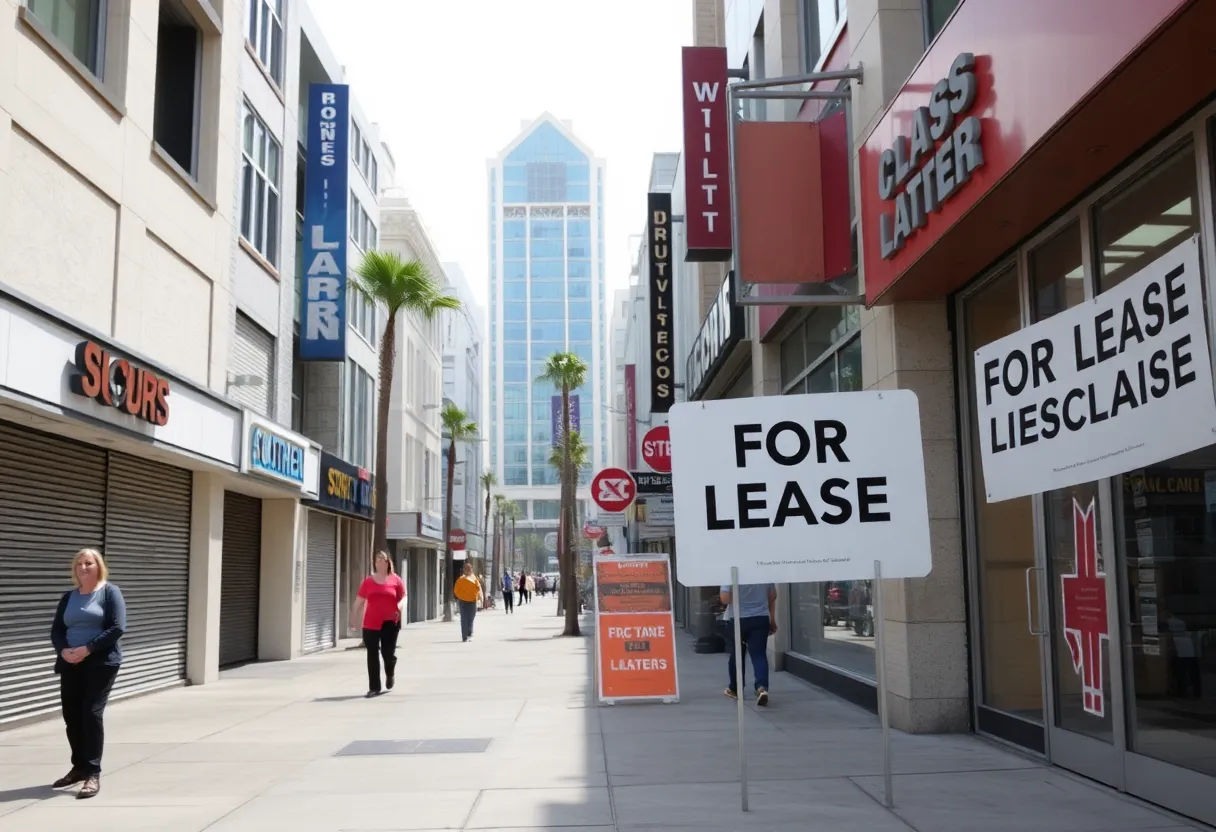News Summary
California businesses, particularly in the wine industry, are increasingly filing for bankruptcy due to inflation, rising interest rates, and a cooling real estate market. Many owners are reassessing their financial strategies as consumer behavior shifts and traditional sales decline. Highlighted are the different types of bankruptcy, the importance of early legal counsel, and how proper planning can aid survival. This trend underscores the necessity for strategic financial management to navigate the challenging economic landscape.
California businesses are increasingly turning to bankruptcy as a viable strategy due to a combination of inflationary pressures, rising interest rates, and a cooling real estate market. This trend highlights the challenges facing various sectors, prompting owners to reconsider their operational viability and financial management strategies.
Particularly affected are the wine industry sectors, including wineries, distributors, and growers. As wine consumption declines in favor of hard liquors and ciders, many businesses in this niche are facing heightened bankruptcy rates. Beyond the wine industry, the retail and manufacturing sectors are similarly grappling with challenges related to high interest rates and a shift towards online shopping, which is diminishing traditional in-store sales.
Office buildings and hotels are also witnessing severe impacts from market changes, leading some businesses to return their properties to lenders instead of formally filing for bankruptcy. As financial pressures continue to mount, retailers across the state are increasingly forced to scale back their operations to survive the harsh economic climate.
Businesses often opt for Chapter 11 bankruptcy as a means to reorganize while preserving operations and protecting employee jobs. Conversely, Chapter 7 bankruptcy is pursued when a business is unable to continue operations and must liquidate its assets. An automatic stay is instituted right after filing for bankruptcy, effectively halting any financial bleeding and offering businesses a chance to stabilize.
It is critical for business owners to seek legal counsel well ahead of the need to file for bankruptcy. Industry experts recommend beginning the process as much as one year in advance to ensure adequate preparation and planning. Common triggers for bankruptcy can include pending litigations, foreclosures, and severe liquidity problems that threaten the survival of the business.
Variations in how bankruptcy statutes are interpreted exist across different federal jurisdictions, often influenced by rulings from the Ninth Circuit. For small businesses, exploring Subchapter V Chapter 11 can provide more affordable options for reorganization without the heavy costs associated with traditional Chapter 11 filings.
Bankruptcy allows businesses the opportunity to sell processes and assets without being encumbered by creditors’ claims, enabling them to scale back operations without facing extremely detrimental repercussions from landlords. It also has the ability to pause litigation and collection efforts, granting companies the necessary space to reorganize their debts into manageable terms over time.
Early legal advice remains paramount; waiting until a cash-strapped scenario arises could render recovery plans ineffective. Business owners frequently have guaranteed loans or leases associated with their companies. Understanding these risks is essential to maintaining operational continuity and effective management.
Success in reorganization is typically measured by a business’s ability to retain employees, stay intact as an operational entity, and ensure that creditors receive more than they would under a liquidation scenario. Proper financial documentation plays a significant role in the bankruptcy process; businesses considering bankruptcy should maintain updated cash flow statements, balance sheets, and profit-loss statements to facilitate informed decisions.
California business owners who engage qualified legal advisors early in the process are presented with a broader range of options and tools necessary for navigating bankruptcy proceedings. The emphasis on early planning underscores how essential it is for businesses to view bankruptcy not merely as a last resort, but as a strategic legal tool for future success and sustainability.
Deeper Dive: News & Info About This Topic
- The New York Times: Lyten and Northvolt – EV Batteries
- Wikipedia: Bankruptcy
- Los Angeles Times: Claire’s Files for Bankruptcy
- Google Search: Bankruptcy Law
- Newsweek: Home Stores Closing
- Google Scholar: Bankruptcy Filing
- North Bay Business Journal: Vintage Wine Estates Bankruptcy
- Encyclopedia Britannica: Chapter 11 Bankruptcy
- The Hill: Del Monte Bankruptcy
- Google News: Bankruptcy in California

Author: STAFF HERE HUNTINGTON BEACH
The Huntington Beach Staff Writer represents the experienced team at HEREHuntingtonBeach.com, your go-to source for actionable local news and information in Huntington Beach, Orange County, and beyond. Specializing in "news you can use," we cover essential topics like product reviews for personal and business needs, local business directories, politics, real estate trends, neighborhood insights, and state news affecting the area—with deep expertise drawn from years of dedicated reporting and strong community input, including local press releases and business updates. We deliver top reporting on high-value events such as the Huntington Beach Surf City USA Marathon, the U.S. Open of Surfing, Fourth of July celebrations at the Huntington Beach Pier, and community festivals at Huntington Beach Central Park. Our coverage extends to key organizations like the Huntington Beach Chamber of Commerce and Visit Huntington Beach, plus leading businesses in retail, hospitality, and outdoor recreation that drive the local economy. As part of the broader HERE network, including HEREAnaheim.com, HERECostaMesa.com, HERESantaAna.com, and HERELosAngeles.com, we provide comprehensive, credible insights into Southern California's dynamic landscape.





